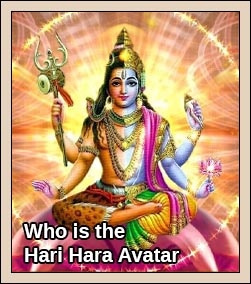There is a saying in Sanskrit, “Amantram Aksharam nasti, nasti moolam anoushadam”. There is not one “Akshara”, in this case a syllable (in this case the syllables used in Sanskrit) which is not a mantra. Now what is a mantra, this needs a little explanation.
Let us take the example of a small data chip that contains enormous amount of information, would we be able to actually see this data without being connected to the appropriate computer equipment? Obviously not.
[wp_ad_camp_1]
Similarly, the potential power of the mantra can only be unlocked by the practitioner who has done a lot of Sadhana and repeating the mantra. In the Shiva Purana, Lord Shiva is shown to be the source of all “Aksharas”, hence mantras can also be used to invoke Ishwara who is the source of the cosmos.
Now let me explain the next part of the saying “nasti moolam anoushadam”, which means there is not one plant root which cannot be used as a medicine. Hence the meaning of the saying is very clear, there is not one “Akshara” which is not a mantra and there is not one plant root that is not a medicine.
One must understand that although all of the plant roots can be used as medicine, not every Tom, Dick and Harry will know how to use these plant roots as medicine. It is only an Ayurvedic doctor who will actually know how to combine, concentrate and use these plant roots for medicinal purposes, he will also recommend the appropriate doses for different patients and also give them personalised medicine.
Similarly it is only a Mantra-Vedi or knowers of mantras or Rishis who will actually know how to combine these “Aksharams” and form different type of mantras. These mantras again have to be given to appropriate individuals as per their requirements; hence the tradition is that certain mantras will have to be taken from traditional Gurus. One cannot simply take a mantra and start repeating it without getting a “Mantra-Upadesam” (telling of a mantra) from a traditional Guru.
Mantras are actually told in utter secrecy to people. The practitioner of a mantra will keep repeating the mantra and this repetition of a mantra is what we call “Japa”.
The mantras that are available to everyone are the names of Ishwara. Let us take an example of the “Rama naam”, the very name “Rama” is actually a mantra. There is a saying that about 7 crore maha mantras are packed into this one name “Rama”. Repetition of the name “Rama” thrice is equivalent to saying the whole Vishnu Sahasranaam once.
Let us have a closer look at the name “Rama”. It has 2 parts “Ra” and “ma”. In the astaakshari mantra “Om namo Narayanaya” if we take out “Ra” , the whole mantra changes to “ Om Namo Na ayanaaya” which gives the meaning there is no way or goal, similarly in the panchakshari “ Om nama Shivaya” if we were to take out “Ma” we get the mantra as “Om na Shivaya” which will mean there is no Shiva.
Hence the 2 Aksharas “Ra” and “Ma” form the basis of the Ashtaakshari and Panchaaskshari respectively; taking out their 2 Aksharas will make both the mantras meaningless. Therefore these 2 Aksharas can be taken as the very essence which gives life of meaning to both the Ashtaakshari and the Panchakshari. In other words, repeating the name “Rama” will give the practitioner the benefit of actually repeating the Ashtakshari and Panchakshari at the same time, the very name “Rama” has packed within it the power of both Lord Vishnu and Shiva.
There is also a certain mathematics associated with mantras, let me take the example of the name “Rama”.
If we were to take the varna mala in devanagari, we have “ya” “ra” “la” “va” and so on, one must notice that “ya” is the 1st Akshara and the “ra” comes 2nd in the varnamala, so we assign the number 2 to “ra”, in the varna mala we have it as follows “pa”, “pha”, “ba”, “bha”, “ma”.
Notice that “ma” comes 5th in this part of the varna mala. Hence we assign the number 5 to “ma”, now when we say “Rama” it is combining the 2nd akshara and the 5th akshara viz 2*5=10.
If we repeat “Rama” thrice, it is equivalent to 10*10*10=1000. It is for this reason the repetition of the name “Rama” thrice is equivalent to repeating the whole Vishnu Sahasranama.
This is in short about mantras and their significance.















I love India Divine Org site where I learn most unknown facts about everything .
Thank you India Divine Team.
Jhansi
In Sahasrnamam lord Shiva answers Godess Parvathi., Sri Rama ramethi,rame rame manorame ,sahsrnama thathulyam ramanamavaranane!
Chanting “Rama” is equivalent to chanting Sahasranamam.
Your articles are really very useful and significant depicting the importance of many Hindu practices and usages and scientific analysis.
i wish you publish a “e Book
containing all the articles so that it can be down loaded and studied .Your efforts are ludable.
wonderful to read unknown significance of matters each
HINDU practices in his day to day life.if one practices something
knowing the meaning of that practice his goal can be achieved
Excellent knowledge is imparted through the articles. Even I used to chant Rama Nanama every day from my childhood, only now I happened to understand, how much important it is!.
Any Mantram has reference to Adisthana Deity , Sakti and Keelakam. For example Rama Naam is known as Taaraka Mantram.
Corresponding to this Divya Namam.Prabhu Rama is Deity. Mata Sita is Sakti(Power). GuruDeva Hanuman is Keelakam. Keelakam is like a nail that fixes mind on Deity.
Vaaku as Jnana/Agni Swarupam represents Karma Indriyamulu. Vaaku also acts as Havya Vaahana which means as an interface Mantram connects mind to Prabhu Rama.